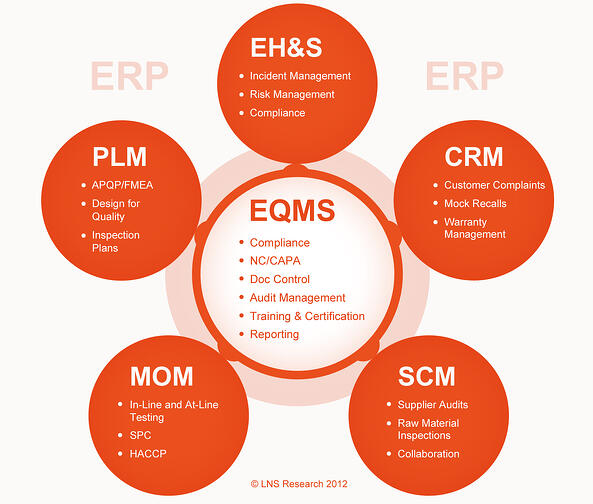Warranty and Risk Management is a very broad topic that many Tier 1 and Tier 2 automotive suppliers struggle with. Part of the struggle is how many different pieces of the enterprise these issues touch as well as the time scale with which success or failure is measured. Another struggle is dealing with the very large OEMs and Tier 1 Suppliers on one side of the supply chain and the plethora of smaller suppliers on the other side.
To successfully implement a warranty and risk management program a company has to foster business processes that create collaboration across departments as diverse as procurement, engineering, manufacturing, supply chain, sales, service, finance, and risk. To be successful, companies also have to maintain successful relationships with trading partners as diverse in scale and sophistication as OEMs like GM or Toyota and small mom and pop shops that still have a single site. Finally, these companies that enjoy success, also have to stay the course and consistently execute their program for 5 to 10 years or more; ensuring that the data and contextual information persists and is available when needed.
What is involved in Warranty and Risk Management?
I don't think many involved in the industry would argue the points above, that warranty and risk management are issues that touch all parts of the company and are very challenging to successfully manage. However, their may not be as much agreement among industry practitioners on what exactly should be contained in an effective warranty and risk management program.
Based on our work with leading manufacturers, here is a list of the things that many automotive suppliers focus on:
- Manage warranty policies and coverages
- Capture accurate and timely claim information through standardized validation process
- Process and adjudicate claims quickly and effectively
- Recover warranty cost from component suppliers
- Track and manage return material authorizations
- Analyze failures and contributing factors to warranty cost
- Manage corrective actions to improve the quality of the products
- Track and manage recalls, good will authorizations, labor codes, and other aspects of warranty operations
- Utilize a risk management framework to evaluate the effectiveness of warranty management operations
- Utilize a risk management framework to optimize the level of funds maintained in warranty reserve accounts
Clearly this is a long complex list, which is a big part of the challenge. It is also a list of business processes well suited to being supported by a combination of standardized business processes and enterprise software.
The role of Enterprise Quality Management Software in Warranty and Risk Management
As far as I am aware, there is still no single software vendor that can address all the issues and business process needs in the above section. Although there are several different types of vendors that have invested in capabilities that can address many of these issues, including: Service Management, Product Lifecycle Management, Enterprise Resource Planning, and Enterprise Quality Management Software.
There are strong value propositions for all these vendor categories but for this post I am going to focus on Enterprise Quality Management Software. Below is a figure we use to represent the space, if you would like more information on Enterprise Quality Management Software in particular please follow this link.

From this info-graphic, you can see that Enterprise Quality Management Software has the ability to standardize and orchestrate many of the processes needed for warranty management, including:
- Document Control
- Non-Conformance Management
- Corrective and Preventive Actions
- Failure Modes and Effects Analysis
- Risk Management
- Returned Material Authorizations
There is definitely opportunity for many automotive suppliers in the market place today to look towards their Enterprise Quality Management Software vendors to help with these warranty management needs. Although it is important to note that not all vendors are created equal. Not all vendors have invested in their technology infrastructure to effectively be able to deal with the process standardization and orchestration requirements needed in this space.
For those of you interested in learning more about this space, we will be publishing a vendor landscape for the Enterprise Quality Management Software space to try and provide clear guidance as to which vendors are equipped to deal with such situations and warranty management more broadly. If you are interested in being notified when this research publishes, or even participating, please share you email with us at the LNS Research home page.
